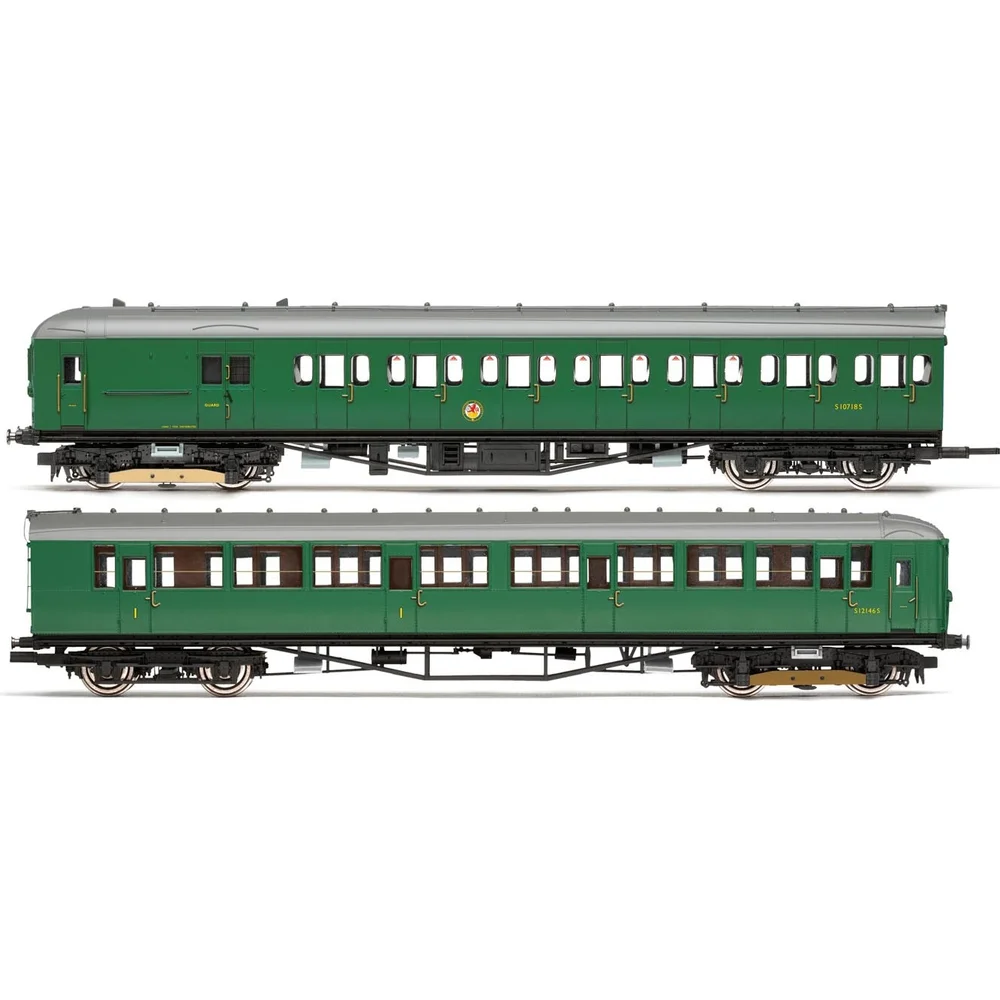Hornby R3699
British Rail Class 402 2611 British Railways Green with Late Crest
Class & Prototype
- Class: British Rail Class 402
- Traction: Electric Multiple Unit
- Built: 1938-1955
- Total Built: 100
- Running Number: 2611
The Southern Railway's 2-HAL electric multiple units were purpose-built for the 1939 Kent Coast electrification, serving commuter routes from London Victoria to Maidstone and Gillingham until 1971. These 100 two-car units featured distinctive domed ends, "Half Lavatory" configuration, and pioneered innovative split-working operations at Swanley. Powered by twin 275hp traction motors with 75mph capability, they established operational patterns still used by modern Southern Rail services. Despite 33 years of reliable service, no units survived preservation, making Hornby's OO gauge models the only way to experience these historically significant trains today.
Operator & Livery
- Operator: British Railways
- Livery: Green with Late Crest
- Era: 5 - British Railways Late Crest
British Railways transformed Britain's fragmented rail network into a unified national system following nationalisation on 1st January 1948. Created from the "Big Four" companies under the Transport Act 1947, BR operated most of Great Britain's railways until rebranding as British Rail in 1965, managing over 20,000 route miles and inheriting nearly 20,000 locomotives of diverse designs.
The organisation pioneered standardisation through its revolutionary BR Standard locomotive programme (1951-1960), producing 999 advanced steam engines under Robert Riddles' direction. These included the versatile Britannia Pacifics, mighty 9F freight engines, and mixed-traffic classes that incorporated the best features from all predecessor companies. The 1955 Modernisation Plan accelerated diesel and electric traction development, creating fascinating mixed-traction operations.
Notable achievements included establishing unified locomotive classification systems, introducing distinctive corporate liveries, and managing the complex transition from steam to modern traction. BR's six regional structure preserved operational diversity whilst enabling standardisation of practices, signalling, and rolling stock that had eluded private enterprise for over a century.
The BR era represents steam traction's final flowering alongside emerging diesel technology, creating unparalleled locomotive variety. Today, this heritage remains highly popular with railway enthusiasts through extensive preserved fleets, heritage railway operations, and comprehensive model ranges from manufacturers like Hornby, Bachmann, and Dapol, making BR subjects essential for authentic post-war British railway modelling across all scales.
